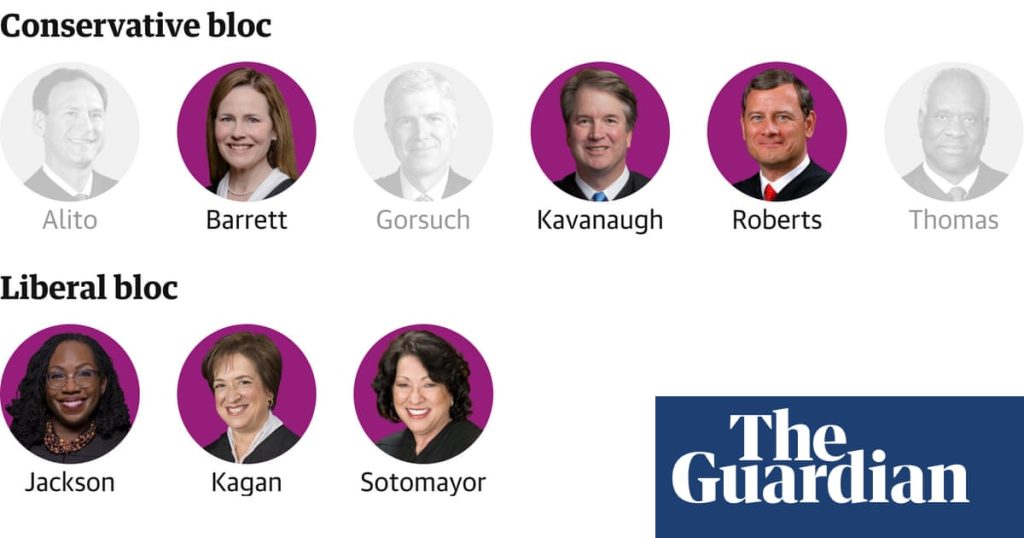Supreme Court Rejects Censorship Claims in Social Media Misinformation Case
The US Supreme Court has overturned a lower court ruling that sided with conservative plaintiffs alleging the Biden administration violated the First Amendment by working with social media companies to combat COVID-19 misinformation. The 6-3 decision, authored by Justice Amy Coney Barrett, effectively allows the government to continue flagging potentially harmful content online without being accused of censorship. The ruling has significant implications for the ongoing battle over online content moderation, especially as the 2024 presidential election approaches.
The case, Murthy v. Missouri, stemmed from accusations that federal agencies, under the Biden administration, coerced tech platforms like Facebook and Twitter into suppressing conservative viewpoints by urging them to remove pandemic-related misinformation. The plaintiffs, including the founder of a far-right conspiracy website, argued that these government actions constituted an Orwellian "Ministry of Truth," stifling free speech and unfairly targeting conservative content. A lower court initially sided with the plaintiffs, issuing a sweeping injunction that restricted communications between the government and social media companies.
The Supreme Court’s decision, however, sidestepped the broader free speech arguments, focusing instead on the plaintiffs’ lack of legal standing. Justice Barrett’s majority opinion emphasized that the plaintiffs failed to demonstrate a concrete link between their alleged injuries and the government’s actions. The court concluded that the plaintiffs’ request for a comprehensive review of years of communication between various government officials and tech platforms represented an overly broad attempt at judicial oversight. In essence, the court declared it lacked the jurisdiction to delve into the specifics of the government’s interactions with social media companies based on the evidence presented.
The dissenting justices, Samuel Alito, Clarence Thomas, and Neil Gorsuch, argued that the majority opinion dismissed legitimate concerns about government overreach in online speech. Justice Alito, in his dissent, characterized the government’s actions as “unrelenting pressure” to suppress free speech and warned that the ruling sets a dangerous precedent for future attempts to control public discourse. He contended that the plaintiffs had sufficiently demonstrated the potential for harm stemming from the government’s actions and that the court should have addressed the underlying First Amendment issues.
The ruling marks a significant victory for the Biden administration and public health advocates who argue that government collaboration with social media platforms is essential for combating misinformation, particularly related to public health crises and elections. The decision also undercuts Republican-led efforts to portray content moderation as censorship, a narrative that gained traction in recent years. By focusing on procedural grounds, the Supreme Court avoided a definitive ruling on the complex interplay between government action, private platforms, and online speech.
While the decision offers a reprieve for the government and tech companies, it leaves many questions unresolved. The court did not address the substantive arguments about the limits of government influence on online content moderation, leaving open the possibility of future challenges with more clearly established standing. This ongoing tension between free speech, government interests, and the power of social media platforms ensures that the debate over online content moderation will continue to evolve. The challenge remains to strike a delicate balance between protecting free expression and mitigating the harms of misinformation, especially in an increasingly polarized digital landscape.
The ruling’s implications for the upcoming 2024 presidential election are substantial. The ability of the government to flag potentially false or misleading information related to the election process remains intact, although the specific contours of permissible government action remain somewhat ambiguous. The decision underscores the complexities of navigating the rapidly evolving digital landscape and the ongoing struggle to define the boundaries of free speech in the age of social media. As misinformation continues to proliferate, the court’s decision leaves many critical questions unanswered, setting the stage for future legal battles over the role of government and tech companies in shaping online discourse.


